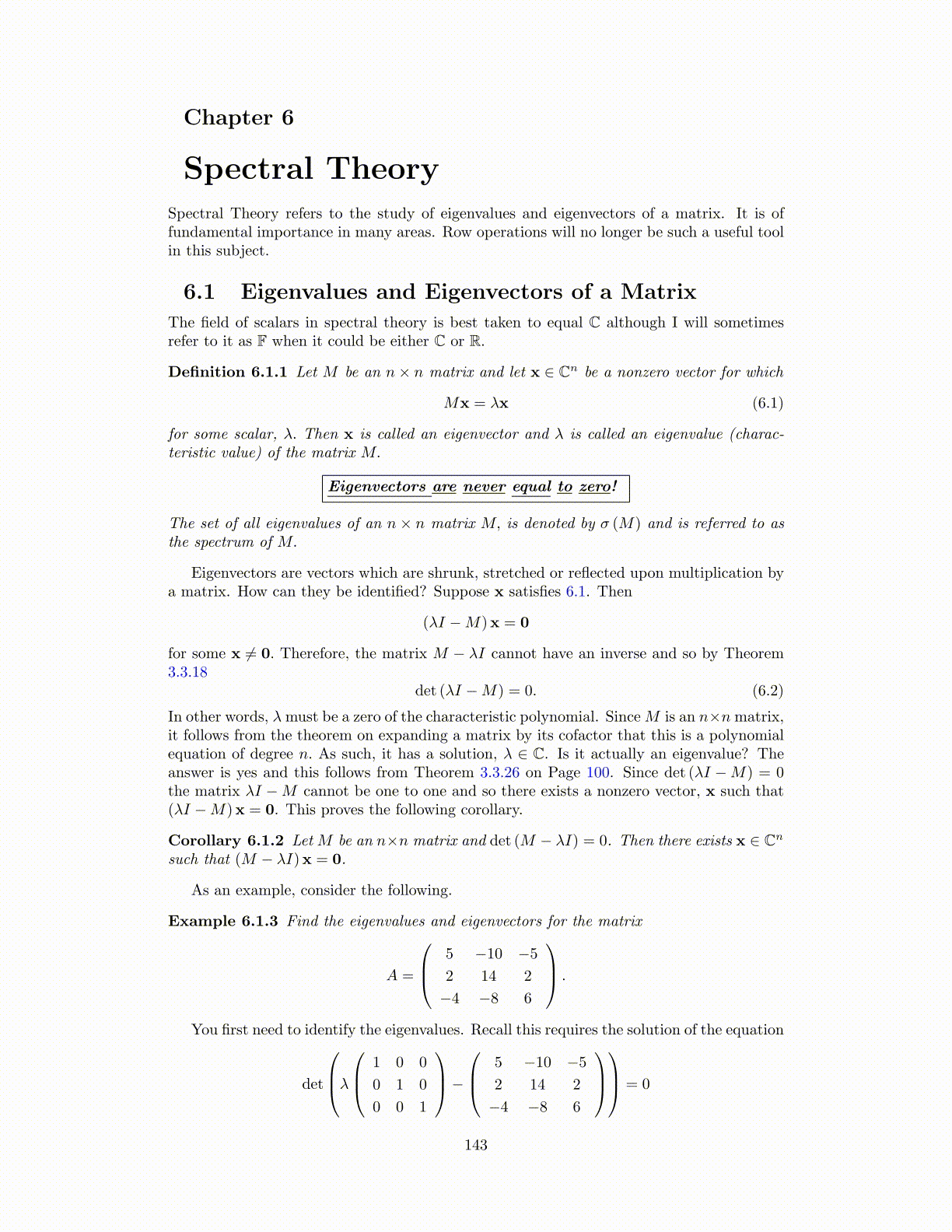
Chapter 6
Spectral TheorySpectral Theory refers to the study of eigenvalues and eigenvectors of a matrix. It is offundamental importance in many areas. Row operations will no longer be such a useful toolin this subject.
6.1 Eigenvalues and Eigenvectors of a Matrix
The field of scalars in spectral theory is best taken to equal C although I will sometimesrefer to it as F when it could be either C or R.
Definition 6.1.1 Let M be an n× n matrix and let x ∈ Cn be a nonzero vector for which
Mx = λx (6.1)
for some scalar, λ. Then x is called an eigenvector and λ is called an eigenvalue (charac-teristic value) of the matrix M.
Eigenvectors are never equal to zero!
The set of all eigenvalues of an n× n matrix M, is denoted by σ (M) and is referred to asthe spectrum of M.
Eigenvectors are vectors which are shrunk, stretched or reflected upon multiplication bya matrix. How can they be identified? Suppose x satisfies 6.1. Then
(λI −M)x = 0
for some x ̸= 0. Therefore, the matrix M − λI cannot have an inverse and so by Theorem3.3.18
det (λI −M) = 0. (6.2)
In other words, λmust be a zero of the characteristic polynomial. SinceM is an n×nmatrix,it follows from the theorem on expanding a matrix by its cofactor that this is a polynomialequation of degree n. As such, it has a solution, λ ∈ C. Is it actually an eigenvalue? Theanswer is yes and this follows from Theorem 3.3.26 on Page 100. Since det (λI −M) = 0the matrix λI −M cannot be one to one and so there exists a nonzero vector, x such that(λI −M)x = 0. This proves the following corollary.
Corollary 6.1.2 LetM be an n×n matrix and det (M − λI) = 0. Then there exists x ∈ Cn
such that (M − λI)x = 0.
As an example, consider the following.
Example 6.1.3 Find the eigenvalues and eigenvectors for the matrix
A =
5 −10 −5
2 14 2
−4 −8 6
.
You first need to identify the eigenvalues. Recall this requires the solution of the equation
det
λ 1 0 0
0 1 0
0 0 1
−
5 −10 −5
2 14 2
−4 −8 6
= 0
143